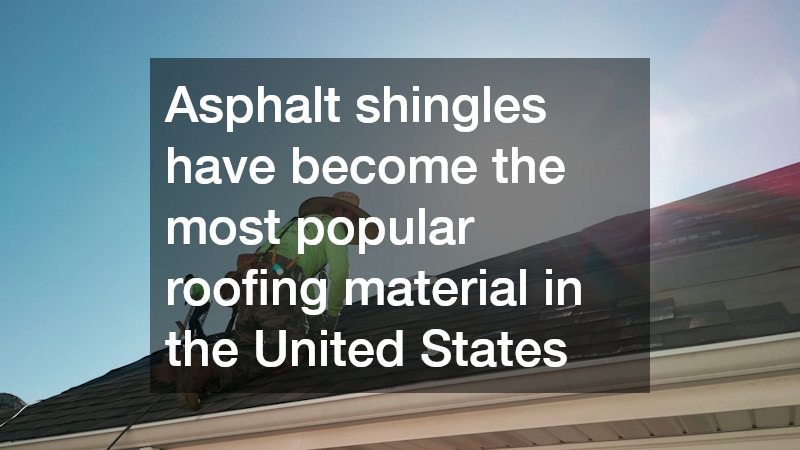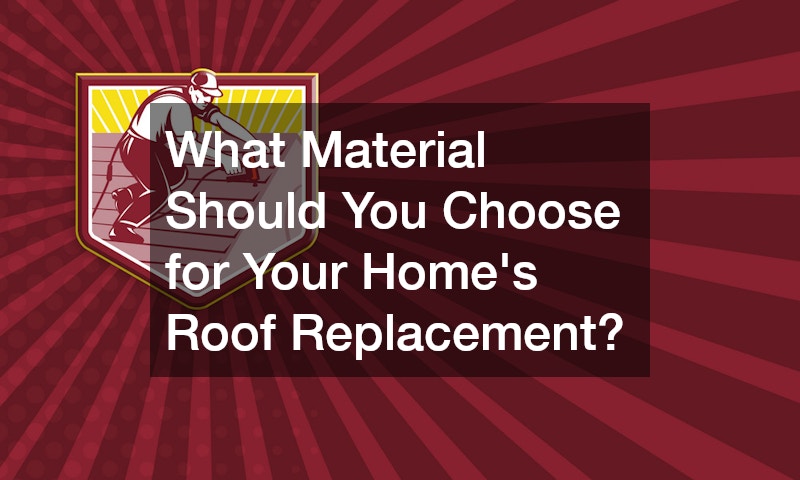Choosing the right material for your home’s roof replacement is a critical decision that impacts the home’s durability, aesthetic, and efficiency. With numerous options available, each offering its own set of advantages and disadvantages, homeowners must carefully consider their specific needs and budget. This article will guide you through various roofing material options to help make your decision easier.
1. Asphalt Shingles
Asphalt shingles have become the most popular roofing material in the United States due to their affordability and ease of installation. They are versatile, coming in various colors and styles, allowing homeowners to select a design that compliments their home’s exterior. Additionally, asphalt shingles are known for their durability, with many lasting anywhere from 15 to 30 years, depending on environmental conditions and maintenance. They offer decent fire resistance and soundproofing, making them a practical choice for many residential properties. However, it’s important to note that asphalt shingles may not be as environmentally friendly as other options, as they often end up in landfills after their lifespan is over.
While asphalt shingles are generally durable, they can be susceptible to high winds and extreme weather conditions. Their weight is relatively low, which makes them easier to handle during installation but also means they’re less resistant to severe weather damages. In regions prone to heavy rains or snowfall, homeowners should consider additional underlayment for better waterproofing. Routine inspections and maintenance are essential to ensure shingles are in good condition and to maximize lifespan. Despite these drawbacks, their cost-effectiveness makes asphalt shingles a consistent choice for roof replacement.
The variety in designs and colors with asphalt shingles also provides ample opportunity for homeowners to improve the curb appeal of their homes. Architectural style shingles, though slightly more expensive, offer a more upscale look resembling wood shakes or slate tiles. Homeowners looking for added weather protection and a unique design might opt for this. Furthermore, many insurance companies offer discounts for roofs that are updated or rated for impact resistance, adding an economic incentive to select quality asphalt shingles. Choices like these not only enhance home value but also offer peace of mind to homeowners.
2. Metal Roofing
Metal roofing materials, such as steel and aluminum, have gained popularity for their longevity and durability. They are known to last between 40 to 70 years or more, depending on the material and installation quality. Metal roofs are energy-efficient, reflecting solar radiant heat, which can reduce cooling costs by up to 25% during hot summer months. They are also environmentally sustainable, as most metal roofing materials are made from recycled content and are fully recyclable at the end of their life. Homeowners interested in an eco-friendly option might find metal roofing an appealing choice for roof replacement.
Beyond their sustainability, metal roofs are also resistant to extreme weather conditions, including high winds, heavy rain, and snow. This resilience helps protect homes in areas with frequent severe weather, providing long-term value and security. The lightweight nature of metal roofs places less stress on the structural integrity of a home. Furthermore, the installation of metal roofing is straightforward, often requiring fewer repairs and maintenance compared to traditional roofing materials. As a result, metal roofing is both a practical and cost-effective solution in various climates.
While metal roofing has many benefits, some homeowners may be concerned about the initial cost. It is typically higher in upfront expenses compared to more traditional materials like asphalt shingles. However, when considering the lifespan and reduced maintenance costs, many find this investment worthwhile. Moreover, metal roofs can significantly increase a home’s resale value, providing a return on investment if the house is sold. Homeowners should weigh the longer-term benefits and consider metal roofing as a durable option for their roof replacement needs.
3. Clay and Concrete Tiles
Clay and concrete tiles are popular choices for their distinctive and appealing aesthetic, often seen on Spanish or Mediterranean-style homes. These materials are extremely durable, with a lifespan exceeding 50 years for well-maintained tiles. They are non-combustible and provide good insulating properties, reflecting heat and reducing the need for air conditioning. Despite their heavier weight, both clay and concrete tiles are resistant to rot and insect damage. This makes them an excellent choice for those prioritizing longevity and structure integrity in their roof replacement.
However, the significant weight of clay and concrete tiles necessitates a reinforced roof structure to support them. This can increase the overall cost of installation, as well as repair or replacement of the structural components. Homeowners considering this material must invest in a professional assessment of their current roof structure. Additionally, while these tiles offer impressive durability, they can be brittle and may crack or break if subjected to heavy impact. Regular maintenance involves periodic inspections to check for such damages and ensure the integrity of the roofing material.
As an added benefit, installing clay or concrete tiles can enhance the market value of a home, giving it a timeless and sophisticated look. Area-specific considerations, such as high humidity or salt-laden environments, may impact long-term performance, making regional experience an essential consideration when choosing this material. With these aspects in mind, homeowners can find clay and concrete tiles a rewarding investment for their roof replacement, both in terms of functionality and aesthetics. Additionally, many modern clay and concrete tiles are available in diverse styles and colors, offering creative freedom and alignment with personal preferences.


